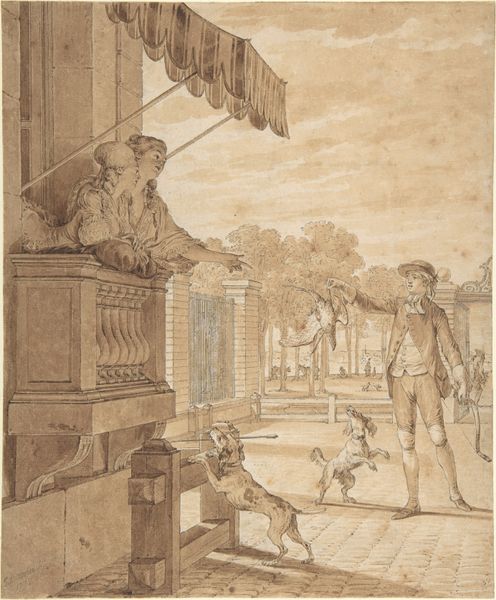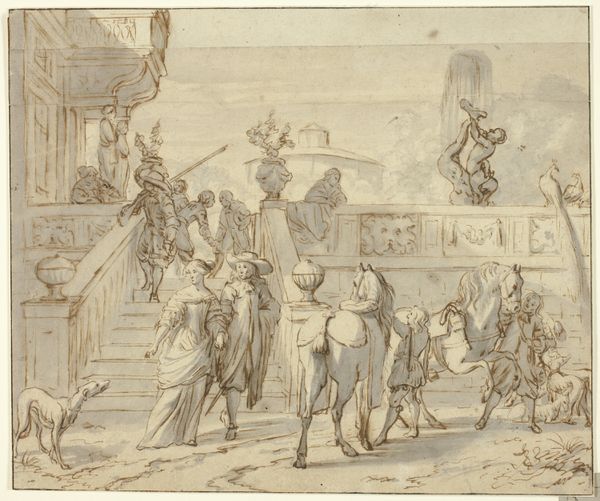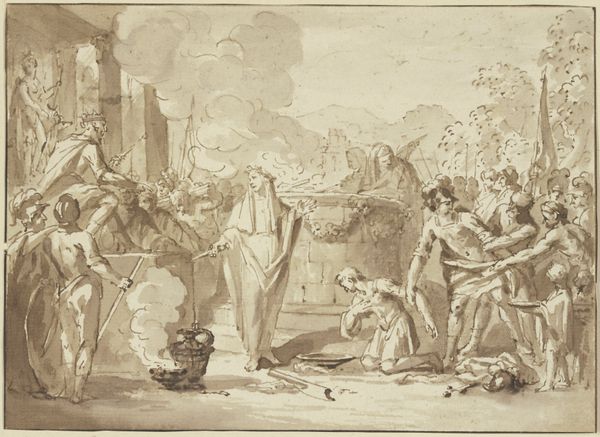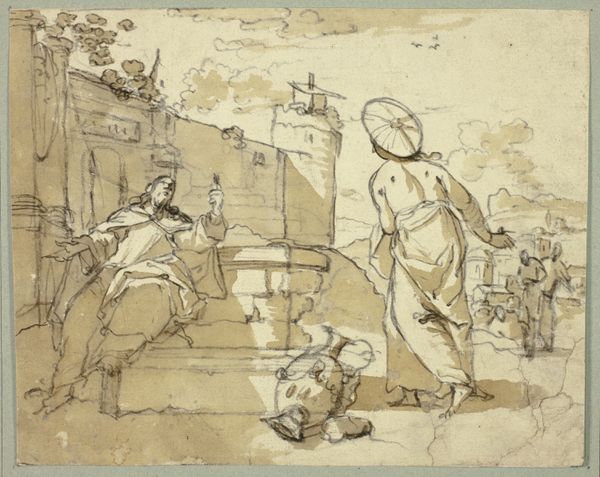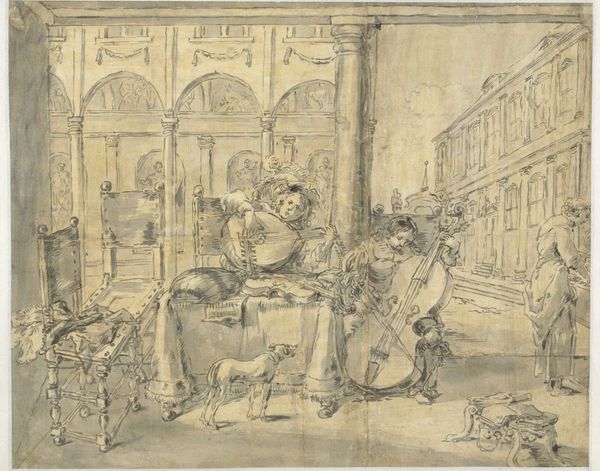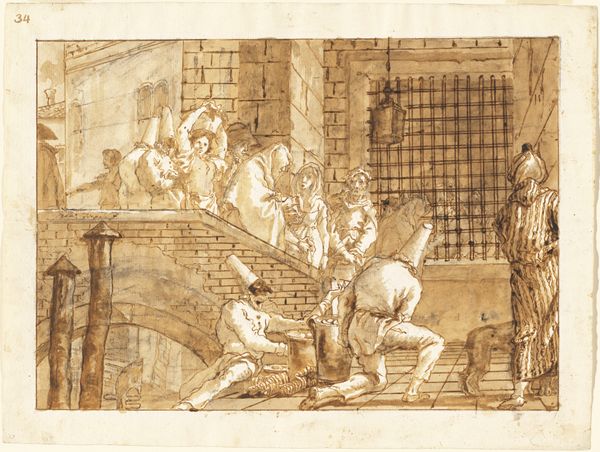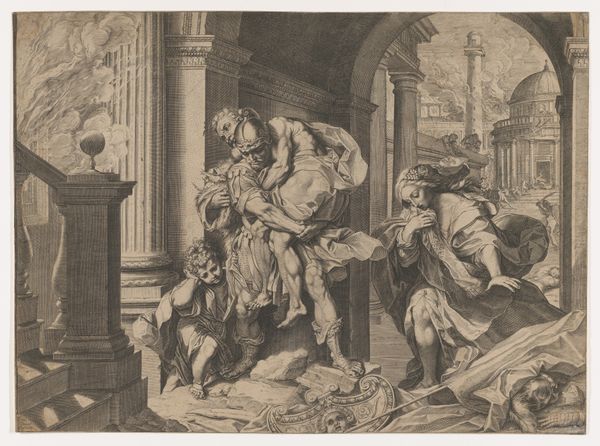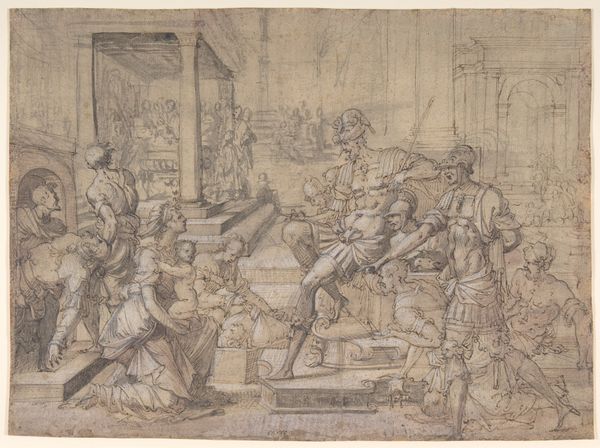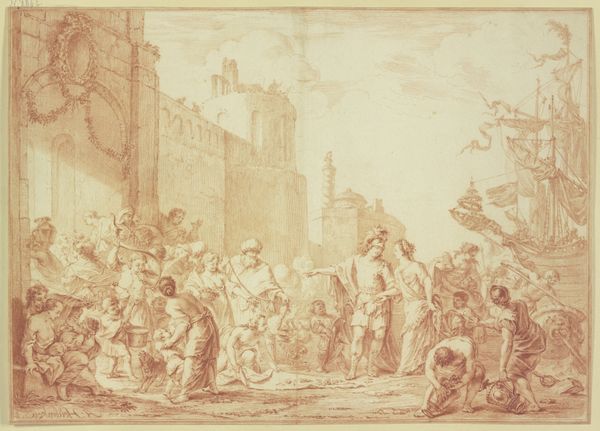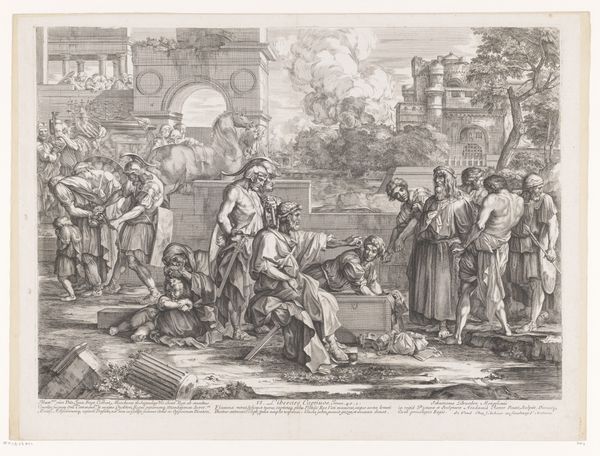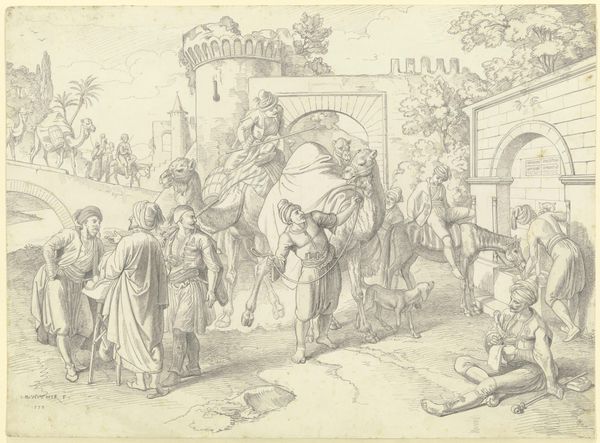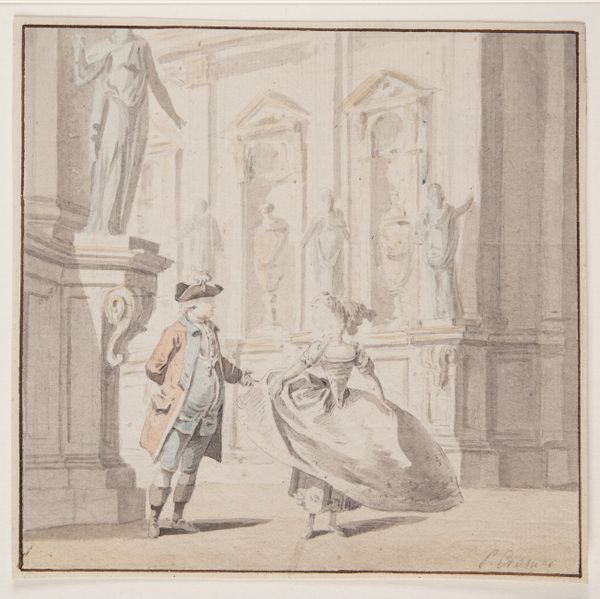
Nobleman Giving Alms to Beggar in Piazza near the Coliseum 1813
0:00
0:00
drawing, pencil
#
portrait
#
drawing
#
neoclacissism
#
dog
#
landscape
#
pencil
#
men
#
cityscape
#
genre-painting
Dimensions: 16 1/8 x 21 1/4 in. (41.0 x 54.0 cm)
Copyright: Public Domain
Curator: This drawing, rendered in pencil, offers us a glimpse into early 19th-century Rome. It’s titled “Nobleman Giving Alms to Beggar in Piazza near the Coliseum,” created by Conrad Martin Metz in 1813. The original can be found here at The Met. Editor: Immediately, what strikes me is the sharp contrast between the two figures—a well-dressed nobleman with his loyal dog, set against the backdrop of grand architecture, and the humbly-dressed beggar. It feels very staged, like a commentary on social performance. Curator: That’s a keen observation. Metz was working in a period where Neoclassicism heavily influenced artistic styles, and a part of this movement involved reflecting on civic duty, which would have resonated in a post-revolution era. The nobleman giving alms wasn't just charity, it was a demonstration of his position, upholding the established order. Editor: Exactly. Look at how deliberately the characters are positioned. The beggar's hand is outstretched in need, reinforcing the image of inequality, while the nobleman's posture conveys controlled generosity. It evokes questions of performative activism in our current discourse around wealth and privilege. What does it really mean to give back within systems that inherently create disparity? Curator: Contextually, the cityscape itself speaks volumes. Placing the act of giving right next to ruins of a powerful past emphasizes a recurring cycle: empires rise and fall, yet the disparity between wealth and poverty persists. It prompts me to consider if these disparities are simply woven into the human experience. Editor: Right, and the choice to represent it in the style of a genre painting rather than as a straightforward historical event feels purposeful. The details – the dilapidated structures juxtaposed against the grand buildings – encourage us to engage not just with a particular event but with the broader systemic issues around wealth distribution. Curator: It does highlight a key concern during that period – how the arts contribute to conversations around social justice, what the responsibility is for wealthy benefactors, and to whom they're beholden. Editor: It’s thought-provoking to see such timeless struggles reflected in artwork over two centuries old, urging us to reassess the progress, or lack thereof, within societal structures. Curator: I concur. "Nobleman Giving Alms" not only offers a snapshot into 19th century Rome, but allows us to scrutinize the ways in which visual culture has perpetuated and critiqued norms of charity, and their place in class structures.
Comments
No comments
Be the first to comment and join the conversation on the ultimate creative platform.
